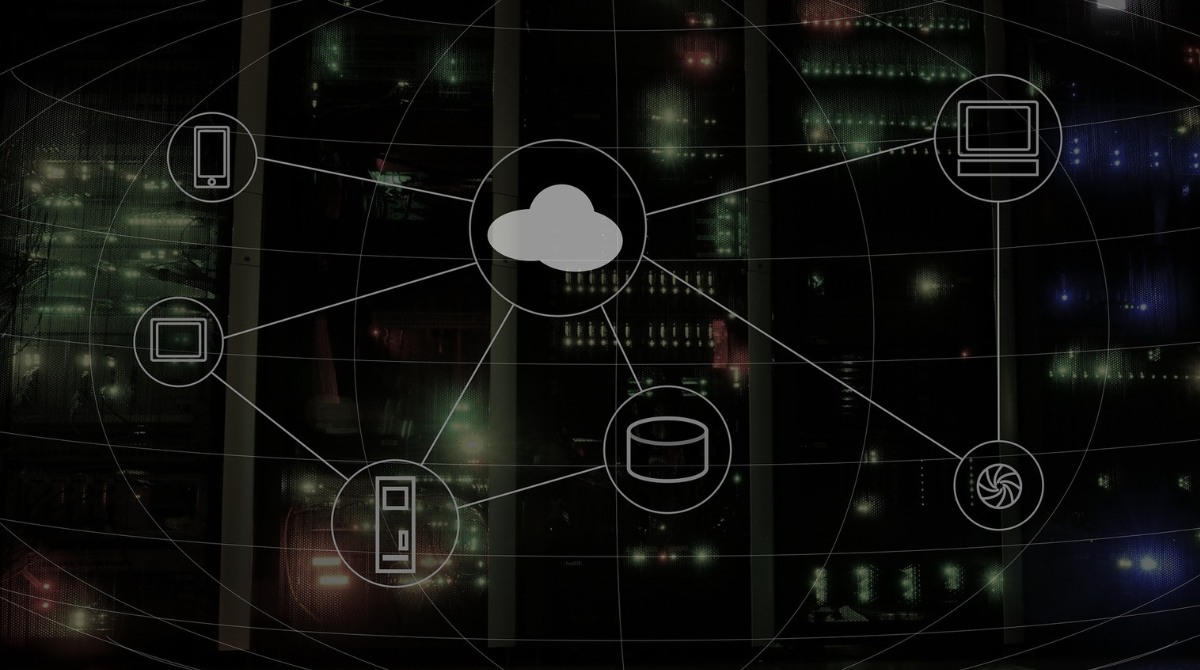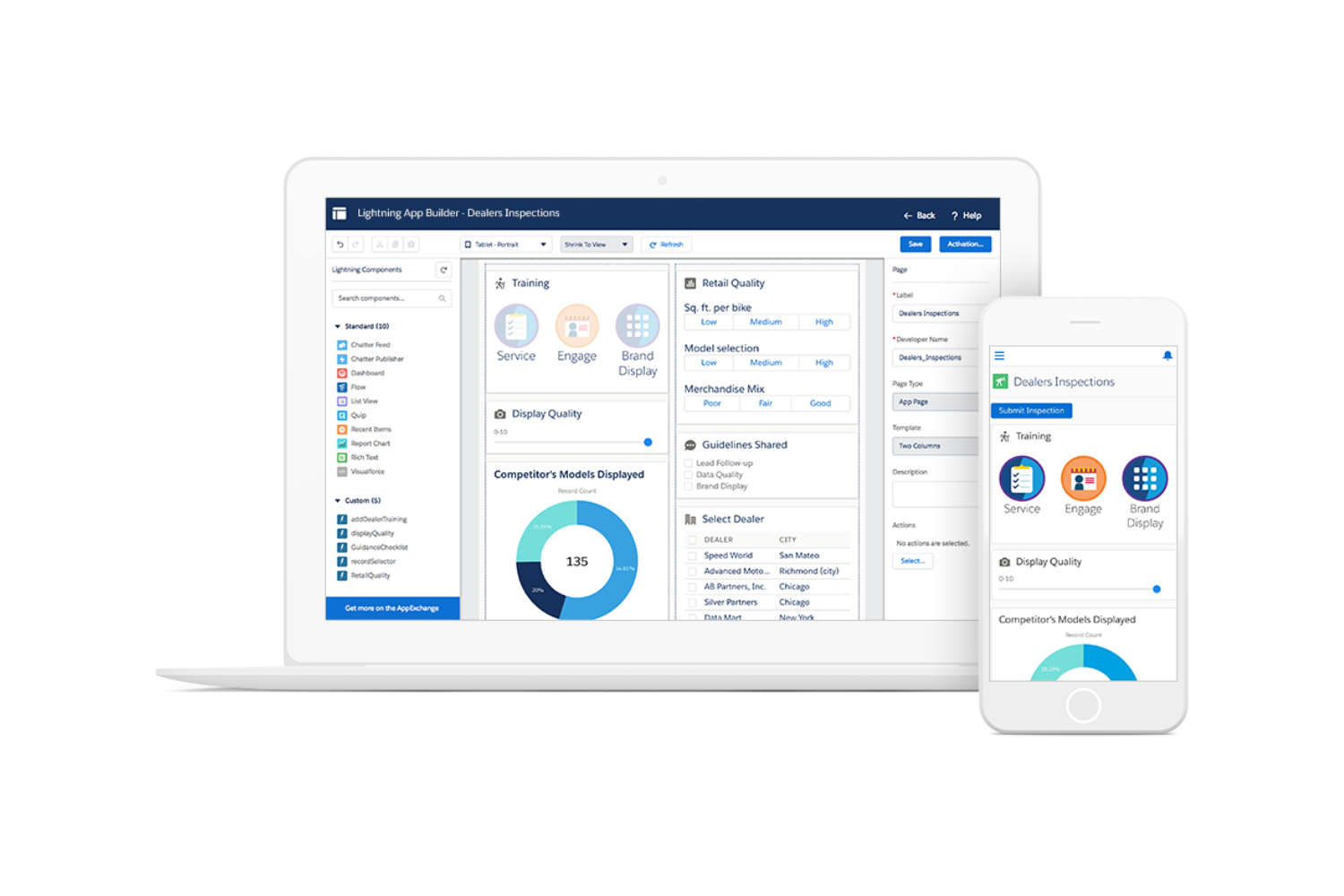Introduction
Welcome to the world of the Software as a Service (SaaS) business model! In today’s digital age, businesses are constantly searching for more efficient and cost-effective solutions to meet their software needs. That’s where SaaS comes into play. SaaS is a software delivery model that has gained immense popularity in recent years due to its many advantages.
In a traditional software business model, companies would purchase software licenses and install them on their own servers. This approach often required significant upfront costs, ongoing maintenance, and dedicated IT resources. However, with the rise of SaaS, businesses now have the option to access software applications over the internet, making them more accessible and hassle-free.
One of the key reasons behind the growing popularity of the SaaS business model is its subscription-based pricing structure. Instead of a large upfront investment, businesses pay a recurring fee to access the software. This not only lowers the barrier to entry but also allows for better budget predictability.
Furthermore, the SaaS model offers flexibility and scalability. As businesses grow, their software needs evolve, and SaaS allows for easy scaling up or down according to demand. This level of agility can be crucial in today’s fast-paced business environment.
SaaS also relieves companies from the burden of software maintenance and updates. With traditional software, companies had to allocate resources to handle patches, upgrades, and bug fixes. With SaaS, these responsibilities are typically taken care of by the service provider, freeing up valuable time and resources for the company.
Overall, the SaaS business model empowers businesses to focus on what they do best while leaving the software-related complexities to the experts. It offers a cost-effective and efficient way to access a wide range of software applications, from customer relationship management tools to project management platforms.
In the following sections, we will delve deeper into the concept of the SaaS business model, exploring its key components, revenue generation strategies, success stories, as well as the challenges and risks businesses may encounter along the way. So, fasten your seatbelts and get ready to dive into the exciting world of SaaS!
Definition of SaaS Business Model
Software as a Service (SaaS) is a business model that provides software applications to customers over the internet. In this model, the software is hosted in the cloud, and users can access it through a web browser or dedicated client applications.
Unlike traditional software models where users would purchase licenses and install the software on their own servers, SaaS offers a more convenient and flexible alternative. With SaaS, customers subscribe to the software on a pay-as-you-go basis, typically on a monthly or annual basis.
SaaS applications are centrally managed, maintained, and upgraded by the service provider. This eliminates the need for customers to handle time-consuming tasks such as software installations, updates, and security patches. Instead, the responsibility lies with the SaaS provider.
Some common examples of SaaS applications include customer relationship management (CRM) software, enterprise resource planning (ERP) systems, project management tools, and collaboration platforms. These applications cater to various business needs and are designed to be easily accessible and user-friendly.
The SaaS model offers several advantages over traditional software delivery models. Firstly, it leverages the power and scalability of cloud computing, allowing for seamless access to software from anywhere with an internet connection. This makes it ideal for remote workforces and businesses with multiple locations.
Additionally, the subscription-based pricing structure of SaaS eliminates the need for upfront capital investment. Instead of purchasing licenses, customers pay a recurring fee based on usage or the number of users. This makes SaaS more affordable and predictable, especially for small and medium-sized businesses.
Another key aspect of SaaS is its ability to provide regular updates and improvements to the software. Since the software is centrally hosted, service providers can roll out updates and new features seamlessly to all users. This ensures that customers always have access to the latest version of the software without any additional effort on their part.
In summary, the SaaS business model revolutionizes software delivery by offering convenient, affordable, and easily accessible solutions. It simplifies software management for businesses and enables them to focus on their core competencies. With the continuous advancements in cloud technology, the SaaS model is expected to continue its growth and reshape the software industry.
Benefits of SaaS Business Model
The Software as a Service (SaaS) business model has gained significant traction in recent years, and for good reason. It offers a multitude of benefits that make it an attractive choice for businesses of all sizes. Let’s explore some of the key advantages of the SaaS business model:
1. Cost Savings: One of the most significant benefits of SaaS is its cost-effectiveness. Traditional software models often require businesses to make a substantial upfront investment in licenses, hardware, and infrastructure. With SaaS, businesses can avoid these upfront costs and pay a predictable monthly or annual fee. This subscription-based pricing model makes it easier for businesses to budget their software expenses and allocate resources more efficiently.
2. Easy Accessibility: SaaS applications can be accessed through a web browser or dedicated client application, making them easily accessible from anywhere with an internet connection. This accessibility eliminates the need for complex installations and allows users to access their software and data on any device, including laptops, tablets, and smartphones. This flexibility is particularly beneficial for remote workers and businesses with distributed teams.
3. Scalability: The scalable nature of the SaaS model is a major advantage for businesses. As your business grows, you can easily scale up your software usage to accommodate increased demand. This eliminates the need to anticipate future software needs and invest in over-provisioned resources. On the other hand, if your needs decrease, you can scale down your usage accordingly, ensuring that you only pay for what you need.
4. Maintenance and Support: With SaaS, the burden of software maintenance, updates, and security is shifted to the service provider. This means that businesses no longer have to worry about applying patches, managing infrastructure, or ensuring data backups. The service provider takes care of all these tasks, allowing businesses to focus on their core operations. Additionally, SaaS providers often offer round-the-clock support to address any issues or questions that may arise.
5. Continuous Innovation: SaaS providers are constantly working to enhance their software offerings. This means that customers benefit from regular updates and new features without any additional effort or cost. These continuous improvements keep the software up to date with the latest technology trends and ensure that businesses have access to the most advanced capabilities, helping them stay ahead of the competition.
6. Agile and Collaborative: SaaS applications are designed to foster collaboration and enhance productivity. They often include features such as real-time document editing, project management tools, and communication channels. These capabilities allow teams to work together seamlessly, irrespective of their physical location. The ability to collaborate efficiently can significantly boost productivity and streamline workflows.
In a nutshell, the SaaS business model offers cost savings, easy accessibility, scalability, simplified maintenance, continuous innovation, and enhanced collaboration. These benefits have positioned SaaS as a preferred choice for businesses looking to optimize their software usage and maximize their efficiency.
Key Components of SaaS Business Model
The Software as a Service (SaaS) business model consists of several key components that work together to deliver reliable and efficient software solutions to customers. Understanding these components is crucial for businesses aspiring to adopt or leverage the SaaS model effectively. Let’s explore the key components of the SaaS business model:
1. Cloud Infrastructure: The foundation of the SaaS model lies in cloud computing infrastructure. SaaS providers use cloud platforms such as Amazon Web Services (AWS), Microsoft Azure, or Google Cloud to host and deliver their software applications. These cloud infrastructures provide the necessary computing power, storage, and networking capabilities to ensure reliable and scalable access to the software.
2. Multi-tenant Architecture: Another essential component of the SaaS model is multi-tenancy. With multi-tenancy, a single instance of the software application serves multiple customers. Each customer, or tenant, is logically separated, ensuring data privacy and security. Multi-tenancy allows providers to efficiently manage and maintain the software while offering cost savings and scalability to customers.
3. Data Security and Privacy: Data security and privacy are critical considerations for businesses adopting the SaaS model. SaaS providers must implement robust security measures to protect customer data from unauthorized access, breaches, or data loss. This includes encrypted data transmission, secure access controls, regular security audits, and compliance with industry regulations such as GDPR or HIPAA.
4. User Interface and User Experience: The user interface (UI) and user experience (UX) play a vital role in the success of a SaaS application. A well-designed UI ensures that users can easily navigate the software, perform tasks efficiently, and access the desired features without any confusion. A seamless and intuitive UX enhances user satisfaction, increases adoption rates, and encourages customer loyalty.
5. Subscription Management and Billing: The subscription-based pricing model is a core aspect of the SaaS business model. SaaS providers need robust subscription management and billing systems to handle customer subscriptions, manage renewals or upgrades, and process payments. These systems ensure accurate billing, automate recurring payments, and provide customers with a transparent view of their subscription status.
6. Customer Support and Service Level Agreements (SLAs): SaaS providers must offer reliable and responsive customer support to address customer inquiries, troubleshoot issues, and provide guidance. Additionally, well-defined Service Level Agreements (SLAs) outline the level of service availability, response times, and performance metrics that customers can expect. Strong customer support and SLAs build trust and confidence in the service.
7. Analytics, Reporting, and Integration: SaaS applications generate a wealth of data that can provide valuable insights for businesses. SaaS providers often offer analytics and reporting capabilities to help users analyze their data and make informed decisions. Integration with other third-party applications is also essential, allowing businesses to connect their SaaS software with existing systems, such as CRM or accounting tools, to streamline workflows.
The strength of the SaaS business model lies in the seamless integration of these key components. When combined effectively, they enable SaaS providers to deliver efficient, scalable, and user-friendly software solutions to their customers while driving business success.
Revenue Generation in SaaS Business Model
Revenue generation is a crucial aspect of the Software as a Service (SaaS) business model. SaaS providers employ different strategies to generate revenue and sustain their operations. Let’s explore some of the key revenue generation methods commonly used in the SaaS industry:
1. Subscription-Based Pricing: Subscription-based pricing is the fundamental revenue model in the SaaS business. Customers pay a recurring fee, typically on a monthly or annual basis, to access the software. The subscription fee is based on factors such as the level of service, the number of users, or the specific features included. This predictable recurring revenue model provides stability and allows SaaS providers to forecast revenue with greater accuracy.
2. Tiered Pricing: SaaS providers often offer tiered pricing plans to cater to the varying needs of customers. These plans include different levels of features, functionality, or usage limits, with each tier priced accordingly. Tiered pricing allows customers to choose a plan that aligns with their specific requirements and budgets. This strategy not only maximizes revenue potential but also provides value to customers by offering pricing options that match their needs.
3. Upselling and Cross-Selling: Upselling and cross-selling are effective techniques used by SaaS providers to increase revenue from existing customers. Upselling involves encouraging customers to upgrade to a higher-priced plan with additional features or increased usage limits. Cross-selling involves offering complementary products or services to existing customers. By identifying customer needs and demonstrating the added value, SaaS providers can successfully upsell or cross-sell, increasing the customer’s overall spending and generating more revenue.
4. Customization and Add-Ons: Many SaaS providers offer customization options and add-ons to tailor the software to specific customer requirements. These customizations typically come with additional fees or one-time charges. By offering customization and add-ons, SaaS providers can meet unique customer needs, differentiate themselves from competitors, and generate additional revenue streams.
5. Professional Services: SaaS providers may offer professional services such as implementation, training, or consulting to assist customers in maximizing the value of their software investment. These services are usually billed separately and can generate additional revenue. By providing high-quality professional services, SaaS providers can deepen customer relationships, foster loyalty, and create new revenue opportunities.
6. Partner Programs: SaaS providers often develop partner programs to expand their reach and generate revenue through partnerships with resellers, consultants, or technology integrators. Partners promote and sell the SaaS solution to their own client base and receive a commission or revenue sharing arrangement. Partner programs allow SaaS providers to tap into new markets, extend their sales channels, and drive additional revenue through indirect sales.
7. Data Monetization: SaaS providers may explore data monetization opportunities by aggregating, anonymizing, and analyzing customer data to generate valuable insights. They can then offer these insights or data-driven products to customers or third-party entities for a fee. Data monetization allows SaaS providers to leverage the vast amount of data generated by their software, creating new revenue streams and enhancing the value proposition for customers.
By employing a combination of these revenue generation strategies, SaaS providers can achieve sustainable growth, maximize their revenue potential, and continuously deliver value to their customers.
Examples of Successful SaaS Companies
The success of the Software as a Service (SaaS) business model has led to the emergence of numerous thriving companies across various industries. Here are some prime examples of successful SaaS companies that have revolutionized their respective sectors:
1. Salesforce: Salesforce is widely regarded as one of the pioneers and leaders in the SaaS industry. They specialize in customer relationship management (CRM) software, providing businesses with a comprehensive suite of tools to manage their sales, marketing, and customer service activities. Salesforce has built a massive customer base and transformed the CRM landscape through its cloud-based, user-friendly platform.
2. Slack: Slack has transformed the way teams communicate and collaborate. Their SaaS communication platform provides businesses with a centralized hub for messaging, file sharing, and team collaboration. Slack’s intuitive interface and extensive integration capabilities have made it a popular choice for companies of all sizes, leading to a significant increase in productivity and efficiency.
3. Zoom: Zoom has become a household name, especially in recent times. Their video conferencing and virtual meeting platform have gained widespread popularity due to its ease of use, reliability, and robust features. Zoom’s SaaS solution has allowed businesses, educational institutions, and individuals to stay connected remotely, transforming the way meetings and events are conducted.
4. HubSpot: HubSpot has revolutionized the world of inbound marketing with its comprehensive SaaS platform. Their all-in-one marketing, sales, and customer service software enables businesses to attract, engage, and delight customers in a personalized and efficient manner. HubSpot’s user-friendly interface and extensive automation capabilities have made it a go-to solution for digital marketers worldwide.
5. Dropbox: Dropbox is a leading cloud storage and file sharing SaaS provider. Their platform allows users to store, sync, and share files securely across multiple devices. With its user-friendly interface and seamless integration capabilities, Dropbox has become a go-to solution for individuals and businesses looking to streamline their file management and collaboration processes.
6. Shopify: Shopify is a powerhouse in the e-commerce industry. Their SaaS platform provides businesses with the tools and resources to build, operate, and scale online stores. Shopify’s intuitive interface, extensive customization options, and robust support have played a significant role in empowering businesses to launch and grow their online presence successfully.
7. Adobe Creative Cloud: Adobe Creative Cloud is a suite of creative software applications delivered through a SaaS model. It includes popular tools like Photoshop, Illustrator, InDesign, and more. Adobe’s Creative Cloud has transformed the way creative professionals work, offering them a complete ecosystem to design, edit, and collaborate on digital content.
These successful SaaS companies are just a few examples of the incredible impact the SaaS model has had on various industries. Their innovative solutions, user-centric approach, and relentless focus on delivering value have propelled them to the forefront of their respective markets, inspiring countless businesses to reimagine their workflows and embrace the power of SaaS.
Challenges and Risks in SaaS Business Model
The Software as a Service (SaaS) business model offers a host of benefits, but it also comes with its fair share of challenges and risks. Understanding these challenges is crucial for businesses considering or already operating within the SaaS industry. Let’s explore some of the key challenges and risks associated with the SaaS business model:
1. Data Security and Privacy: Data security is a paramount concern in the SaaS model. SaaS providers must ensure robust security measures to protect customer data from unauthorized access, breaches, or data loss. Safeguarding customer trust and complying with data protection regulations like GDPR or HIPAA is essential. Any breach in data security can severely damage a SaaS company’s reputation and lead to legal ramifications.
2. Reliability and Service Interruption: SaaS providers need to ensure high system availability and minimal service interruptions. Downtime or service disruptions can adversely affect customer satisfaction, productivity, and ultimately revenue. Implementing redundant systems, robust infrastructure, and disaster recovery plans is necessary to minimize any potential impact on users’ operations.
3. Vendor Lock-In: Switching from one SaaS provider to another can be challenging and expensive. Businesses subscribing to a SaaS solution may face vendor lock-in, with the reliance on specific features, integrations, or proprietary data formats. Assessing the potential for vendor lock-in and ensuring the availability of data migration options are crucial considerations for businesses to maintain flexibility.
4. Integration and Compatibility: SaaS applications need to integrate seamlessly with existing systems and platforms. Incompatibility issues can arise, causing disruptions, data inconsistencies, or additional resource requirements for businesses. Ensuring compatibility and considering integration capabilities during the selection process is critical to avoid unnecessary complexities and potential roadblocks.
5. Scalability and Performance: SaaS companies must have the infrastructure and resources to support the scalability demands of their customers. As user bases and data volumes grow, SaaS providers must ensure that their systems can seamlessly handle increased usage without sacrificing performance. Failing to scale effectively can lead to slow response times, downtime, or degraded user experience.
6. Pricing and Profitability: Determining the right pricing strategy and achieving profitability can be challenging for SaaS companies. Balancing the need to remain competitive with the goal of generating sustainable revenue is crucial. Pricing models, tiers, and value-based pricing need careful consideration to ensure that they align with customer expectations and deliver profitability for the provider.
7. Customer Retention and Churn: SaaS providers face the risk of customer churn, where customers decide to discontinue their subscriptions. Ensuring customer satisfaction, providing exceptional support, and regularly introducing new features and updates are vital to maintaining customer loyalty and reducing churn rates. The fiercely competitive nature of the SaaS industry makes customer retention a top priority.
While the SaaS model provides numerous advantages, businesses need to be aware of the challenges and risks it entails. By proactively addressing these challenges, implementing robust security measures, ensuring scalability and performance, and fostering customer loyalty, SaaS providers can mitigate risks and build sustainable growth in the dynamic SaaS market.
Conclusion
The Software as a Service (SaaS) business model has transformed the software industry, offering businesses convenient, cost-effective, and flexible solutions for their software needs. By delivering software applications over the internet, SaaS has democratized access to technology, making it accessible to businesses of all sizes and industries.
The benefits of the SaaS model are evident. Businesses can save costs by eliminating the need for upfront investments in licenses and infrastructure. The subscription-based pricing model offers predictability and scalability, allowing businesses to scale up or down as needed. Furthermore, SaaS relieves businesses from the burden of software maintenance and updates, enabling them to focus on their core operations.
Successful SaaS companies have emerged in various sectors, revolutionizing how business is conducted. Companies like Salesforce, Slack, and Zoom have reshaped customer relationship management, collaboration, and communication. Their success is a testament to the power of the SaaS model in delivering efficient, user-friendly solutions.
However, the SaaS business model also brings challenges and risks that need to be navigated carefully. Data security and privacy, system reliability, vendor lock-in, integration complexities, and customer churn are among the challenges that SaaS providers must address. By proactively managing these risks and continuously innovating, SaaS companies can maintain a competitive edge in the market.
In conclusion, the SaaS business model has revolutionized software delivery, making it more accessible, cost-effective, and scalable. It empowers businesses with convenient and user-friendly software solutions, enabling them to focus on their core competencies. As the demand for cloud-based solutions continues to grow, businesses will increasingly embrace the SaaS model to optimize their software usage and drive growth in the digital era.

























